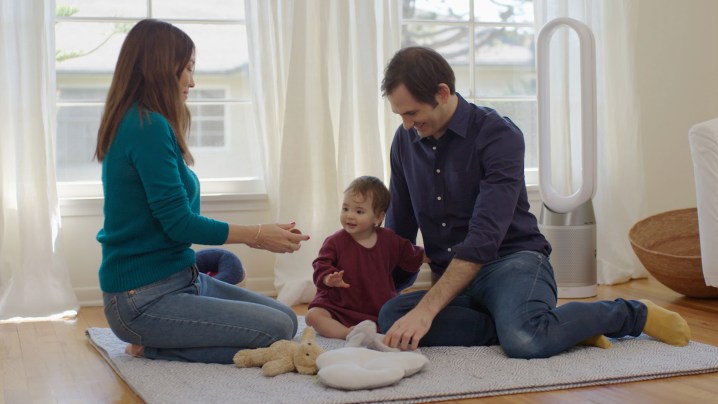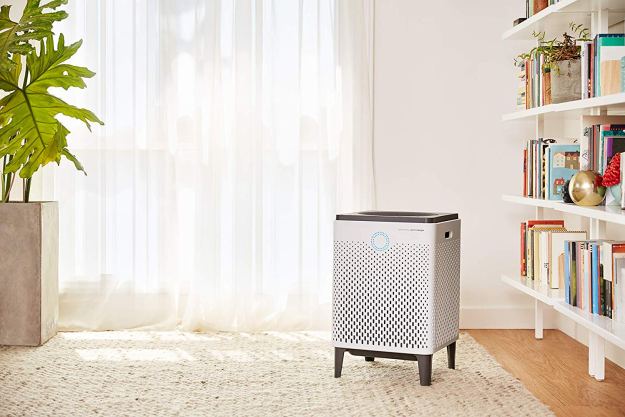
For some time now, Dyson has occupied a unique position in the home appliance niche. Oftentimes, it seems the company comes up with a device that performs one or two functions so effortlessly it’s hard to imagine how we got along without them. Its latest outing is the Pure Cool air-purifying fan.
More than just a fan, Dyson Pure Cool brings technology to the problem of eliminating as much of our invisible indoor air pollution as possible. You can even pair it with your Amazon Alexa device for voice control options. According to Dyson, the filter aboard the Pure Cool is capable of filtering out the required 99.7 percent of solid particles and gases needed for high-efficiency particulate air (HEPA) classification, making the fan as effective as the air scrubbers used by professionals.
And because the fan can oscillate in a wide arc of 350 degrees, and features Dyson’s proprietary Air Multiplier technology, all of this conditioned air is easily projected throughout the room at a rate of 77 gallons per second.
Although the fan is called “Pure Cool,” it’s intended for year-round use and filtration duty. Dyson engineers claim to solve the wintertime cooling effect by including a switchover for reverse airflow. As a result, homeowners can enjoy cleaner air throughout the year without worrying about the irritating wind-tunnel effect ordinary fans are known for.
The focal point of the Pure Cool fan — apart from its bladeless design — is its touch-sensitive LCD screen, which provides information on the types of indoor and outdoor pollutants the fan is filtering at any given time. This is made possible with the inclusion of three sensors. Another sensor identifies humidity levels the temperature of the room.
Pure Cool works well with Dyson’s iOS or Android app, Dyson Link, which lets users keep an eye on the air quality in their home. Moreover, you will receive alerts when it’s time to change the fan’s filter.
The algorithms that power the series of sensors within Dyson’s latest fan are unique, and the company promises to continue to offer over-the-air software refinements for users even after they purchased their fan and put it to work.
The Pure Cool comes in a tower fan model and a smaller, tabletop fan model. You can buy the Pure Cool tower for $550 or the smaller model for $450.
Editors' Recommendations
- The 5 best smart ceiling fans for your home in 2024
- Ikea’s new Dajlien home fitness collection features portable air purifier, much more
- Is an air quality monitor worth adding to your home?
- Can an air purifier really help you breathe easier during wildfire season?
- Can a robot vacuum work as an air purifier?


